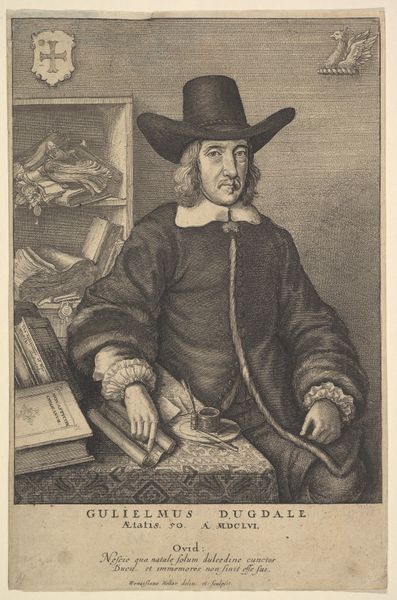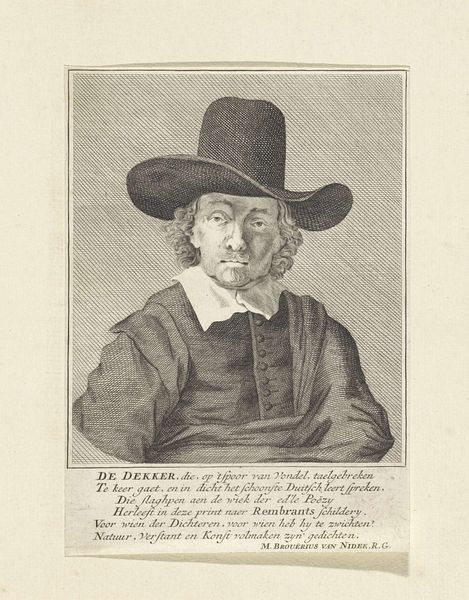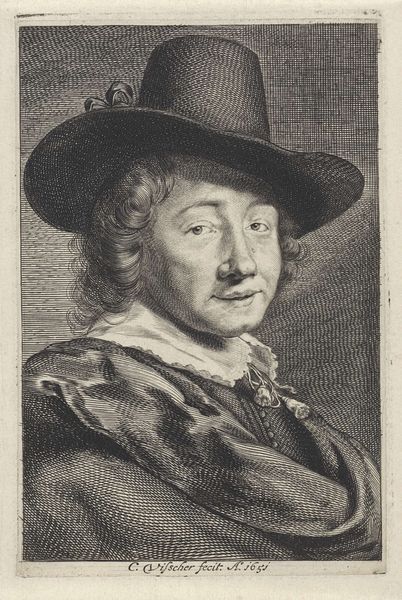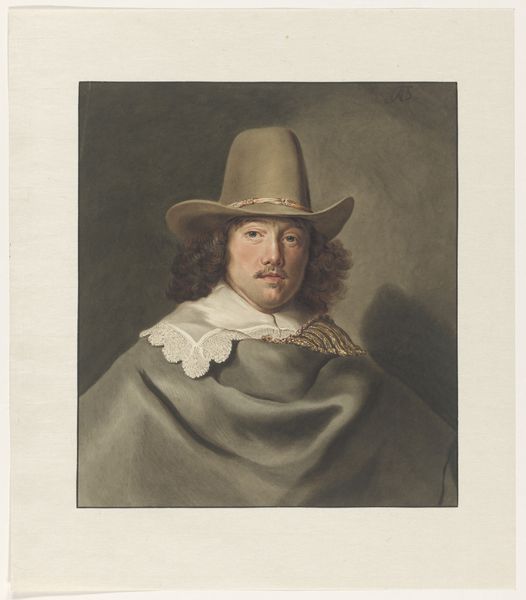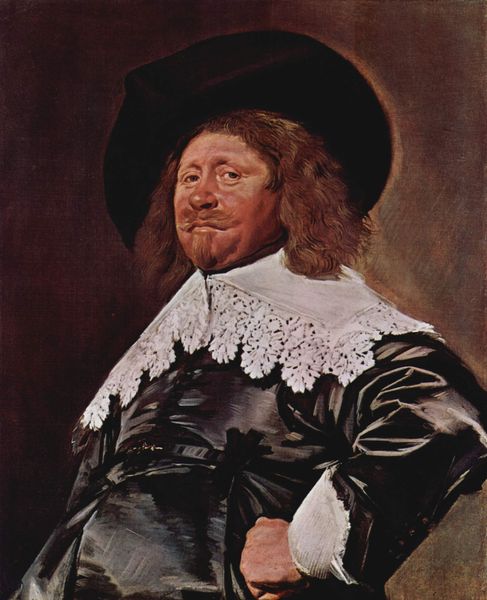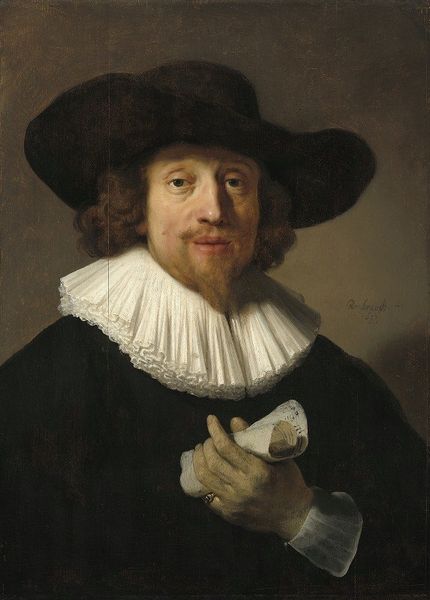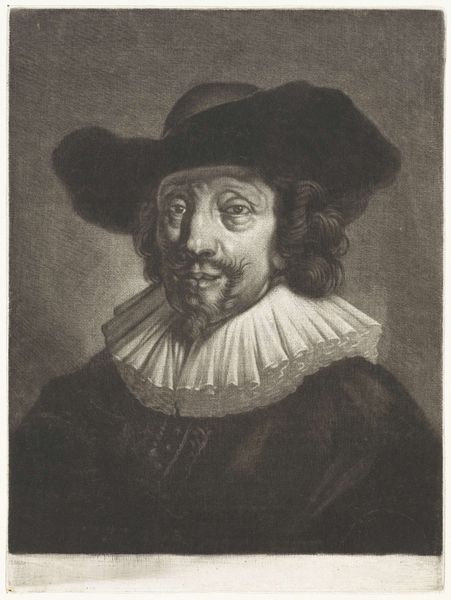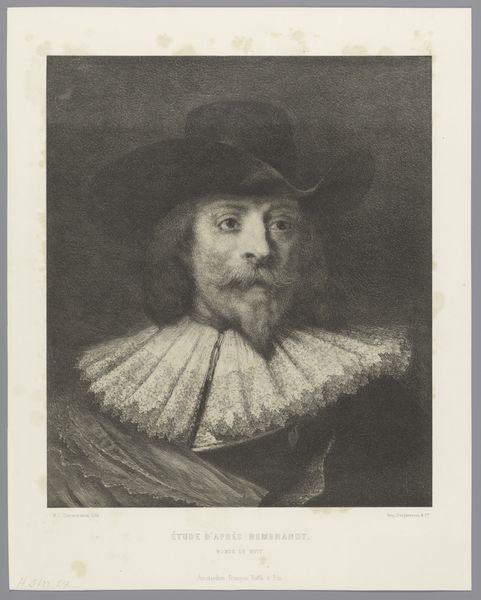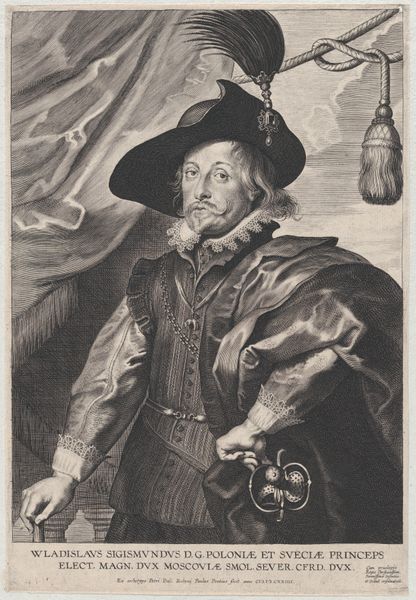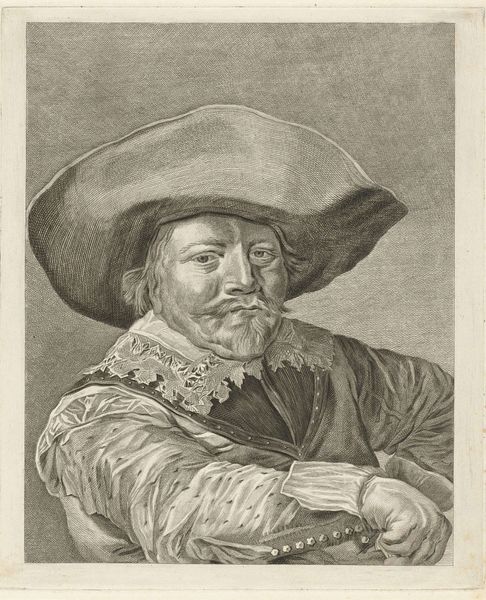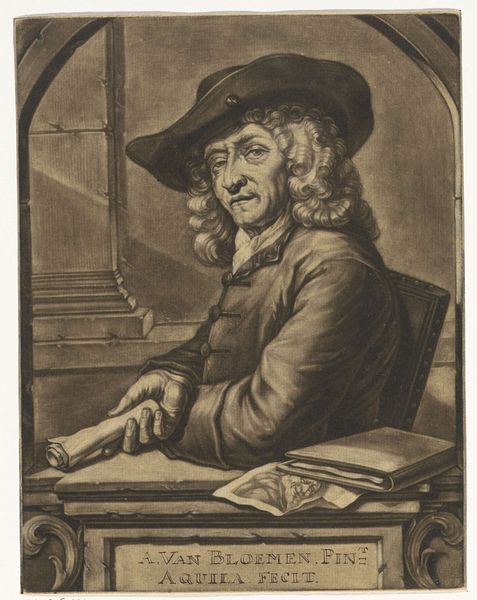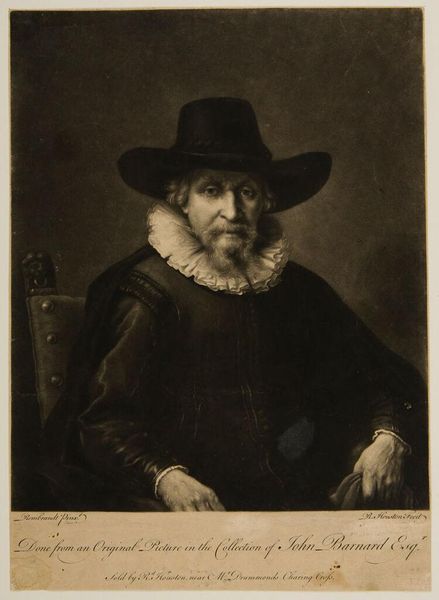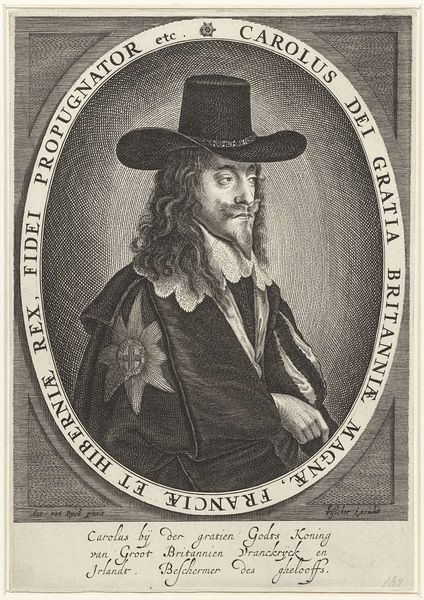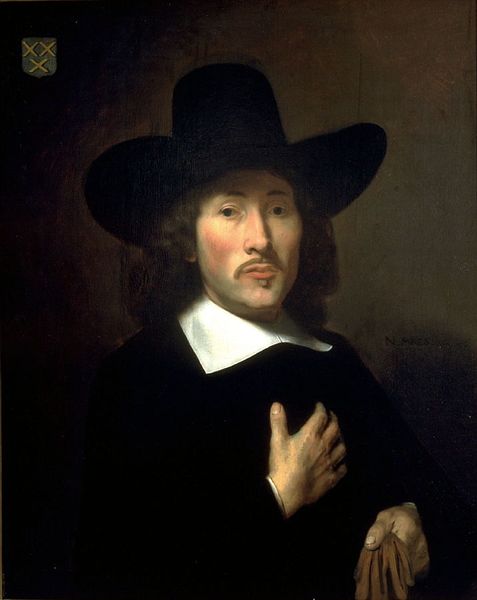
drawing, chalk
#
portrait
#
drawing
#
caricature
#
romanticism
#
chalk
#
15_18th-century
#
portrait art
Copyright: Public Domain
Editor: Here we have Cornelis van Noorde's "Portrait of Johan van Clarenbeek," created in 1791 using chalk. I'm immediately struck by the artist's attention to detail, especially in the ruff and the subject's subtle expression. What stands out to you, particularly regarding its formal elements? Curator: The formal properties of the drawing are quite compelling. Note the artist's use of line, especially in defining the contours of the face and hat. How would you describe the quality of those lines - are they smooth, broken, assertive, hesitant? Consider too how the artist models form through subtle variations in shading. Where do you see the most effective use of light and shadow? Editor: I'd say the lines are fairly smooth, creating a sense of realism but also a certain softness. The light and shadow around the eyes and cheekbones definitely add depth. Do you see any specific formal techniques at play? Curator: Absolutely. The contrast between the dark hat and coat and the lighter face immediately directs the viewer's gaze. Consider, also, the strategic placement of highlights, like the small dashes of white in the eye, bringing out his face with such soft lighting. The careful orchestration of these visual components reveals much about Noorde's technical skill and choices regarding what and how the viewer perceives the portrait. Editor: It’s fascinating to observe how all the elements work together to emphasize certain features of the composition! Thanks. Curator: Indeed. A keen awareness of an artist's manipulation of formal elements can enrich our experience and understanding.
Comments
No comments
Be the first to comment and join the conversation on the ultimate creative platform.
